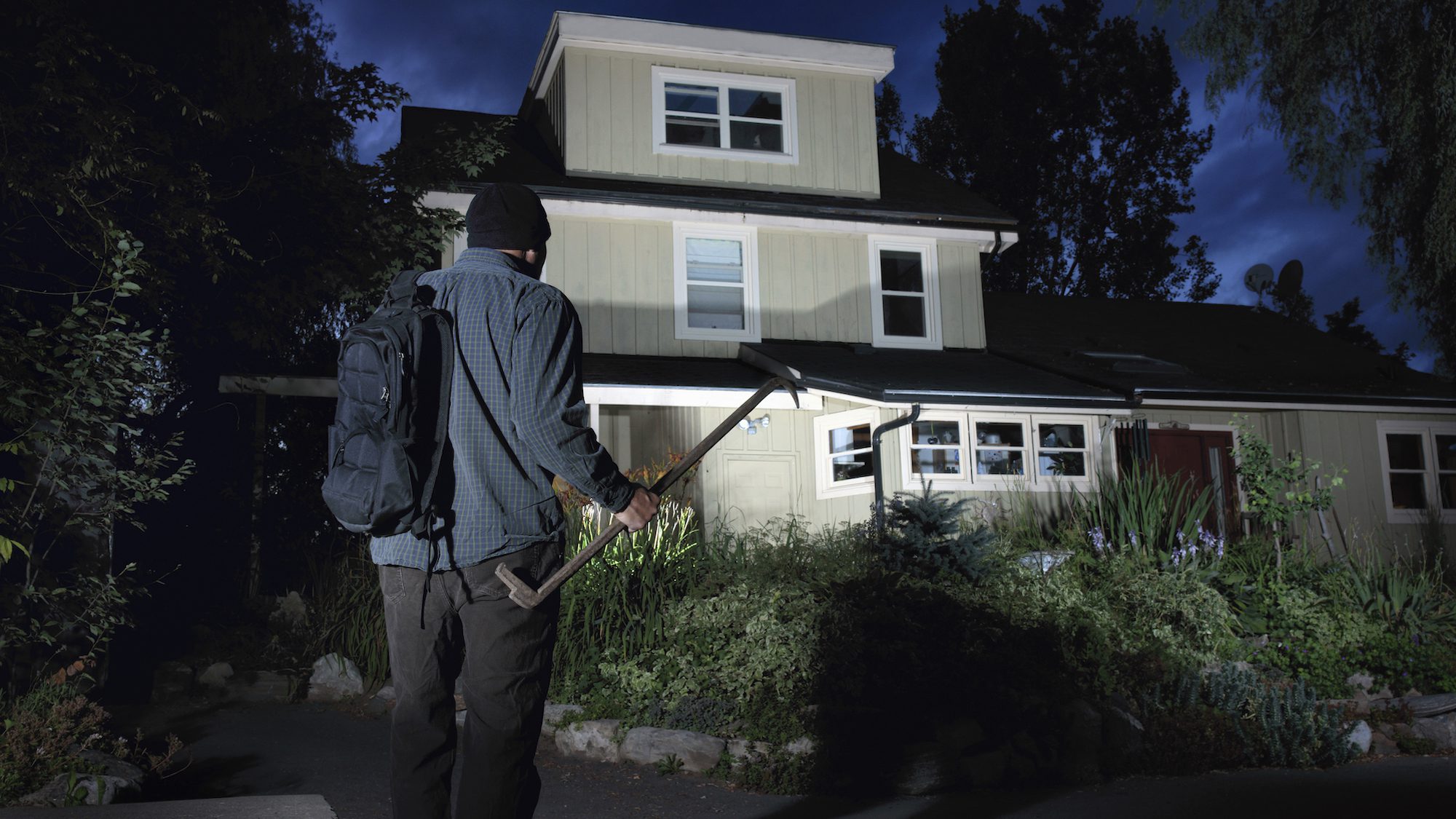Most Burglaries Happen at Night—and 5 Other Home Security Myths You Need To Stop Believing

Fertnig/Getty Images
When it comes to protecting your home from criminals, the stakes can be high. Burglaries at residential properties make up more than 70% of all theft, according to the FBI, and the average loss per burglary tops $2,000.
But there are also plenty of myths circulating in the world of home security. If you have the wrong idea about how to keep yourself safe, you could be making your house an awfully attractive target for criminals.
We talked to experts to learn the most common myths about home security, along with the tricks that actually work for keeping your home safe.
Myth No. 1: Most break-ins happen at night
Savvy criminals don’t just creep in the darkness.
“The reality is that the majority of burglaries occur during the day between the hours of 10 a.m. and 3 p.m.,” says Christian Cerda, chief executive officer at SimpliSafe. “Most people are at work and kids are in school.”
That said, COVID-19 has kept many of us at home during the day.
“It remains to be seen just yet if and how break-ins have been affected” by the pandemic, Cerda says.
Myth No. 2: Most burglaries happen when you’re at home
If your house is ransacked, it’s unlikely that you’ll be seeing the burglar face to face.
“With the average burglary lasting only 8 to 12 minutes, burglars want as little trouble as possible, which includes encountering homeowners,” Cerda says.
Myth No. 3: Break-ins usually involve forced entry
“In the big picture, predators are usually looking for the path of least resistance,” says Lisa La Boriqua, residential territory manager for ADT Security. That means burglars are looking for homes where they won’t need to spend a lot of time and effort to get inside.
“Many spend all day long studying an area, a home, your schedule, and what kind of vulnerability your choice of security has,” La Boriqua says.
Careful criminals will also comb through social media posts, so be careful with what you share online. Your vacation photos might signal to criminals that the coast is clear to break in.
Myth No. 4: My ‘Beware of Dog’ sign is intimidating
Eh, it’s probably not—that is, unless you have a really intimidating dog to match.
Criminals “will want to hear or see a dog,” La Boriqua says.
A sign alone won’t cut it, she explains. “And most dogs are truly loving pets that can be distracted with food.”
Ask yourself honestly: Is your dog more likely to attack or cuddle up to a stranger who approaches with a tasty treat?
Myth No. 5: Keeping the drapes open will keep burglars at bay
Living in a fishbowl isn’t necessarily going to deter criminals. In fact, it could make you even more of a target if you have appealing goods inside.
“If your drapes are open, you are also advertising what you own,” La Boriqua says. “It is better to keep them closed and let someone guess if you are home or not.”
Myth No. 6: I’m safe and smart; I’m confident my home isn’t a target
That’s a nice thought, but there are lots of ways to inadvertently make yourself a target. Even something innocuous, like taking out the trash and leaving boxes in the alley, can provide burglars with valuable information.
“You advertise a recent purchase of a new TV instead of breaking the box down and putting it in a bag in the trash,” La Boriqua says. “Criminals spend hours going up and down alleys to find the shoppers.”
Even your landscaping could betray you. If you have thick foliage or bushes around your home, you have plenty of potential spots for burglars to hide until they can sneak into your home.
A careless mistake like leaving a ladder on the side of your home can also put you at risk.
“You may as well give them the keys,” La Boriqua says.
What really works to deter burglars?
Light and sound are two easy and effective ways to keep your home safe.
Putting your lights on a timer can keep criminals on their toes and make it harder to guess your schedule, La Boriqua says. Just be sure to change up your lights and timer schedule every so often.
Keeping a radio on can also make it harder for people to tell if you’re home or not.
Outside the house, motion-triggered lights are a good way to scare off intruders.
“Lights help cameras and neighbors see who is out there,” La Boriqua says. “Many times a burglar will keep on walking.”
Speaking of doorbell cameras, they aren’t just a new-fangled tech gimmick—they actually work.
“Burglars know that video doorbells provide homeowners with visibility into ‘porch pirating’ of packages,” Cerda says. “They’re aware that many of today’s camera technologies trigger an emergency response to alarm events.”
For extra security, consider investing in an alarm system and additional smart home technology, like automatic door locks, garage door openers, and light switches.
“They can be programmed to tell you when they are opened and allow you remote control to access them,” La Boriqua says. “It is like your home is talking to you and even letting you know about out-of-the-normal behavior in your home.”
The post Most Burglaries Happen at Night—and 5 Other Home Security Myths You Need To Stop Believing appeared first on Real Estate News & Insights | realtor.com®.


Comments